
How to Use Bi-Directional Logic Level Converter: Examples, Pinouts, and Specs
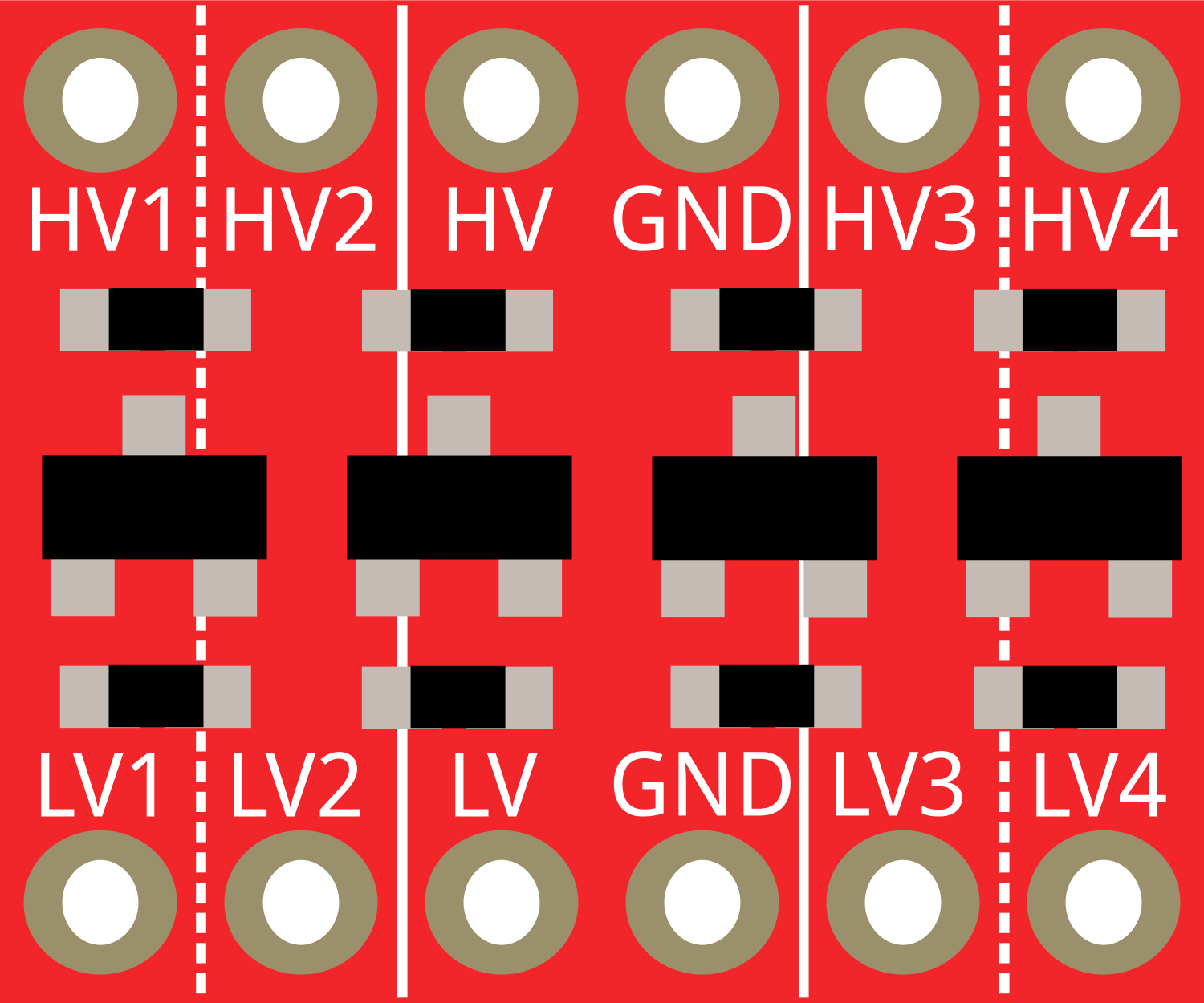
 Design with Bi-Directional Logic Level Converter in Cirkit Designer
Design with Bi-Directional Logic Level Converter in Cirkit DesignerIntroduction
The Bi-Directional Logic Level Converter is an essential device for modern electronics projects, enabling communication between components operating at different voltage levels. It is particularly useful when interfacing 5V logic devices, such as an Arduino Uno, with 3.3V logic devices, like many sensors and modules. This converter ensures signal integrity and prevents damage to sensitive components by matching their voltage levels.
Explore Projects Built with Bi-Directional Logic Level Converter
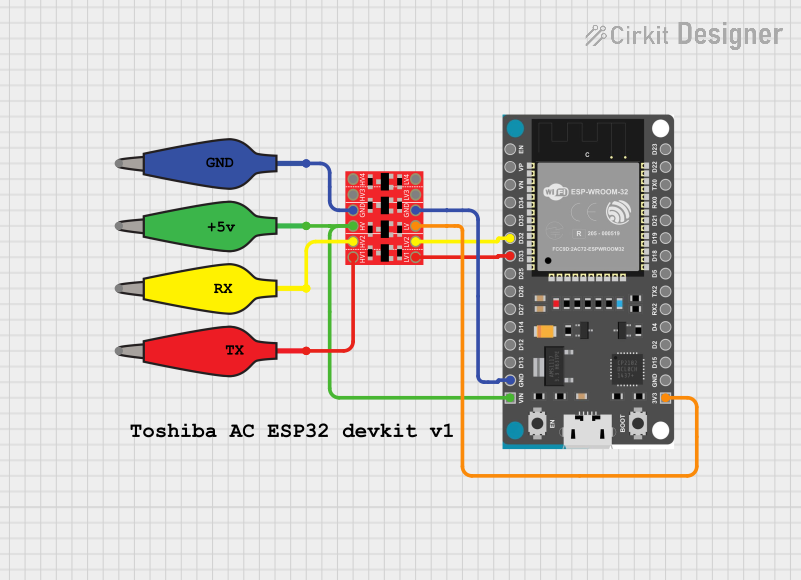
 Open Project in Cirkit Designer
Open Project in Cirkit Designer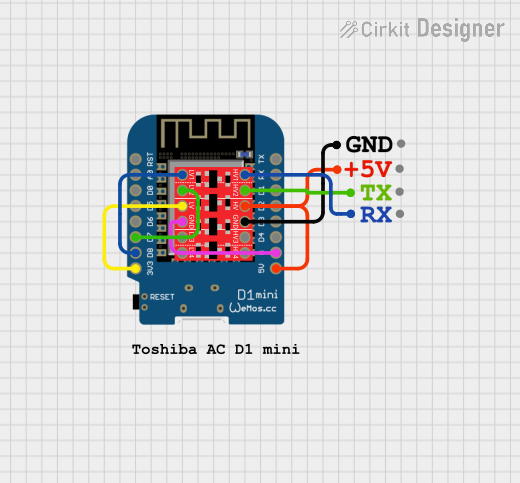
 Open Project in Cirkit Designer
Open Project in Cirkit Designer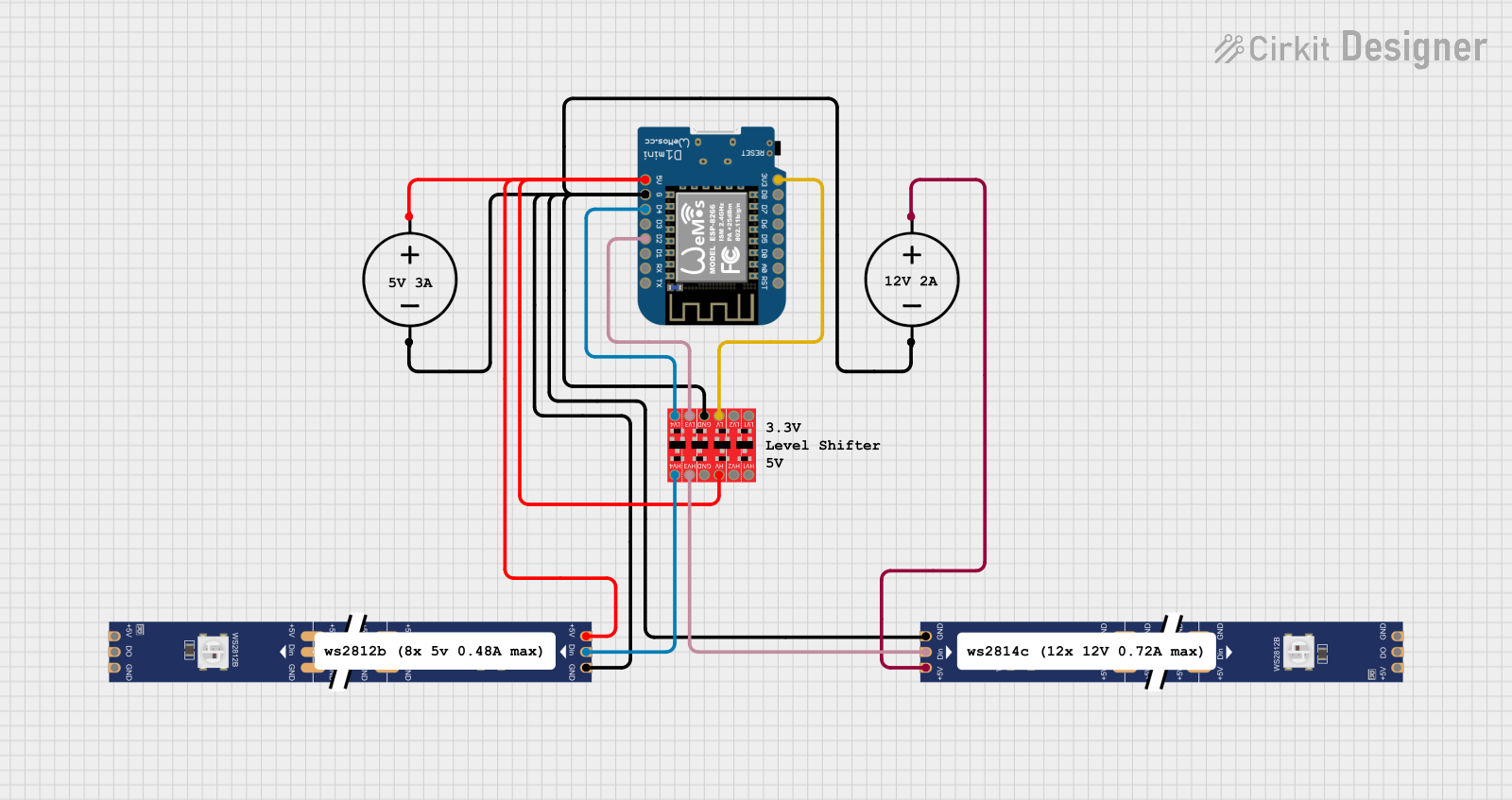
 Open Project in Cirkit Designer
Open Project in Cirkit Designer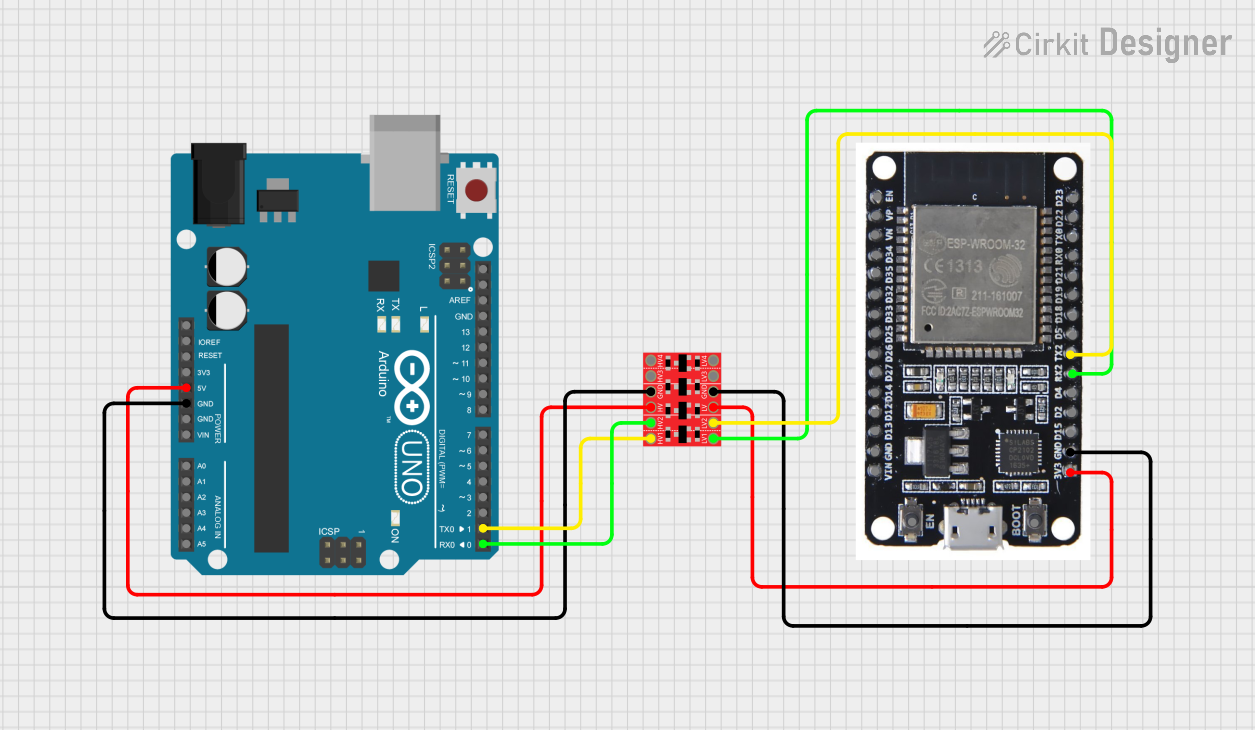
 Open Project in Cirkit Designer
Open Project in Cirkit DesignerExplore Projects Built with Bi-Directional Logic Level Converter

 Open Project in Cirkit Designer
Open Project in Cirkit Designer
 Open Project in Cirkit Designer
Open Project in Cirkit Designer
 Open Project in Cirkit Designer
Open Project in Cirkit Designer
 Open Project in Cirkit Designer
Open Project in Cirkit DesignerCommon Applications and Use Cases
- Interfacing 5V microcontrollers with 3.3V sensors
- Connecting 3.3V modules to 5V systems
- Data communication between devices with different voltage logic levels
Technical Specifications
Key Technical Details
- Bidirectional voltage level conversion
- Voltage Levels: 5V to 3.3V and 3.3V to 5V
- Channels: 4
- Maximum Current per Channel: 50 mA
- Dimensions: Varies by manufacturer
Pin Configuration and Descriptions
| Pin Name | Description |
|---|---|
| HV | High Voltage (5V) Supply Input |
| LV | Low Voltage (3.3V) Supply Input |
| GND | Ground Reference |
| HV1-HV4 | High Voltage Logic Input/Output Pins |
| LV1-LV4 | Low Voltage Logic Input/Output Pins |
Usage Instructions
How to Use the Component in a Circuit
- Connect the
GNDpin to the ground of both the 5V and 3.3V systems. - Connect the
HVpin to the 5V power supply. - Connect the
LVpin to the 3.3V power supply. - Connect the high voltage logic signals to
HV1-HV4. - Connect the corresponding low voltage logic signals to
LV1-LV4.
Important Considerations and Best Practices
- Ensure that the power supply is stable and within the specified voltage range.
- Do not exceed the maximum current rating per channel.
- Avoid applying signals to the input pins when the converter is not powered.
- Use pull-up resistors if required by the specific application.
Example Connection with Arduino UNO
// Example code for interfacing a 3.3V sensor with an Arduino Uno using
// a Bi-Directional Logic Level Converter.
void setup() {
// Initialize the Arduino digital pin connected to the HV1 pin of the converter.
pinMode(2, OUTPUT);
}
void loop() {
// Send a HIGH signal from the Arduino to the 3.3V sensor.
digitalWrite(2, HIGH);
delay(1000); // Wait for 1 second.
// Send a LOW signal from the Arduino to the 3.3V sensor.
digitalWrite(2, LOW);
delay(1000); // Wait for 1 second.
}
Troubleshooting and FAQs
Common Issues
- Signal not converting properly: Ensure that the power supplies are connected correctly and that the ground is shared between the two systems.
- Device not responding: Check if the logic level converter is properly powered and that the signal pins are connected to the correct HV and LV pins.
Solutions and Tips for Troubleshooting
- Verify that all connections are secure and free from shorts or opens.
- Measure the voltage levels on the HV and LV sides to ensure proper operation.
- If the device is not responding, try using pull-up resistors on the LV side.
FAQs
Q: Can the logic level converter be used with I2C or SPI communication?
A: Yes, the converter can be used with I2C and SPI, but for I2C, pull-up resistors may be necessary.
Q: Is it possible to power the converter with voltages other than 5V or 3.3V?
A: The converter is designed for 5V to 3.3V conversion. Using other voltages may not work and could damage the device.
Q: Can the converter be used in both directions simultaneously?
A: Yes, the converter is bi-directional and can handle simultaneous conversions on all channels.
This documentation provides a comprehensive guide to using a Bi-Directional Logic Level Converter in various electronic projects. By following the specifications, usage instructions, and troubleshooting tips, users can safely and effectively integrate different logic level devices.